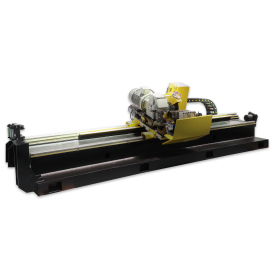[High-power Solid state HF welder ]Unlocking the Future of Welding: The Advantages and Innovations of High-Power Solid State HF Welders in Modern Manufacturing
News 2024-12-27
High-power solid state HF welders have become increasingly vital in various manufacturing sectors, thanks to their ability to produce strong, consistent welds with minimal energy consumption. As industries strive for efficiency and quality, understanding the workings and benefits of these advanced welding machines is crucial. This article will explore the technology behind high-power solid state HF welders, their applications, benefits, and future trends in the industry.
Understanding High-Power Solid State HF Welding Technology
High-frequency (HF) welding is a technique that utilizes high-frequency electromagnetic fields to heat and bond materials, typically thermoplastics or metals. Unlike traditional welding methods that rely on heat from flame or electric arcs, solid state HF welding employs high-power solid state devices. These devices generate high-frequency electrical energy that is transformed into heat, allowing for precise and controlled welding operations.
The mechanics of solid state HF welding involve electromagnetic oscillation. When electrodes are applied to the surfaces of the materials to be welded, the high-frequency current generates rapid oscillations that cause the materials to heat up due to molecular agitation. The heat generated softens the surfaces, allowing them to fuse under pressure. This process results in strong and durable welds without compromising the structural integrity of the materials involved.
Advantages of High-Power Solid State HF Welders
1. **Energy Efficiency**: One of the most significant benefits of high-power solid state HF welders is their energy efficiency. Traditional welding systems often waste a considerable amount of energy in the form of heat dissipation. In contrast, solid state devices convert electrical energy into thermal energy with minimal waste, leading to reduced operational costs and a smaller carbon footprint.
2. **Precision and Control**: High-power solid state HF welders offer unparalleled precision in their operations. The technology allows for fine-tuning of energy input, pressure, and timing, enabling operators to achieve consistent and high-quality welds regardless of the material or thickness. This precision is particularly valuable in industries where tolerances are strict and deviations can lead to significant issues.
3. **Versatility**: Solid state HF welders are compatible with a range of materials, making them highly versatile. They are widely used for welding plastics and metals, including PVC, polypropylene, and aluminum. Their ability to handle various materials opens up diverse applications across multiple manufacturing sectors, from automotive to electronics and packaging.
4. **Low Maintenance Requirements**: High-power solid state devices boast a high reliability rate with minimal maintenance needs. Unlike older technologies that involve moving parts that are susceptible to wear and tear, solid state systems have fewer mechanical components, leading to longer lifespans and reduced downtimes.
5. **Environmentally Friendly**: As industries become increasingly focused on sustainability, the inherently eco-friendly nature of high-power solid state HF welders makes them attractive. Their reduced energy consumption translates to lower greenhouse gas emissions, and the absence of toxic fumes associated with some traditional welding methods enhances workplace safety.
Applications in Industries
High-power solid state HF welders find applications in various industries, including:
- **Automotive**: Used for welding plastic components, such as dashboards and body panels. - **Electronics**: Essential for bonding and sealing components in assembling devices, helping ensure reliability and performance. - **Packaging**: Widely utilized for sealing plastic films and containers, providing effective moisture and contamination barriers. - **Aerospace**: Employed in applications where lightweight, yet strong materials are necessary.

Unlocking the Future of Welding: The Advantages and Innovations of High-Power Solid State HF Welders in Modern Manufacturing

Unlocking the Future of Welding: The Advantages and Innovations of High-Power Solid State HF Welders in Modern Manufacturing

Unlocking the Future of Welding: The Advantages and Innovations of High-Power Solid State HF Welders in Modern Manufacturing
Moreover, ongoing advancements in energy efficiency and materials science will likely enhance the capabilities of high-power solid state generators, making them even more effective and sustainable. This aligns with the industry's increasing emphasis on reducing waste and improving overall operational efficiency.
In conclusion, high-power solid state HF welders are revolutionizing manufacturing processes, offering a combination of precision, efficiency, and sustainability. As industries continue to evolve, embracing this cutting-edge technology will be essential in maintaining competitiveness while addressing the demands of modern production environments. With new trends on the horizon, the role of solid state HF welding in advanced manufacturing is poised for significant growth.
